Wilmington, NC Pollen and Allergy Report for Summer 2023
Pollen Allergy Trends in Wilmington, NC
When is pollen lowest in Wilmington, NC?

February
Lowest month total PPM
Avg. PPM
When is pollen highest in Wilmington, NC?

April
Highest month total PPM
Avg. PPM
How does pollen in Wilmington, NC compare to North Carolina?
Wilmington has a higher average PPM than the state of North Carolina.
Wilmington yearly avg PPM:
North Carolina yearly avg PPM:
How does pollen in Wilmington, NC compare to the USA?
Wilmington has a higher average PPM than the USA.
Wilmington yearly avg PPM:
USA yearly avg PPM:
Is pollen worse this year in Wilmington, NC?
Spring 2023 was worse than spring 2022.
Spring 2023 PPM:
Spring 2022 PPM:
Average PPM in Wilmington, NC
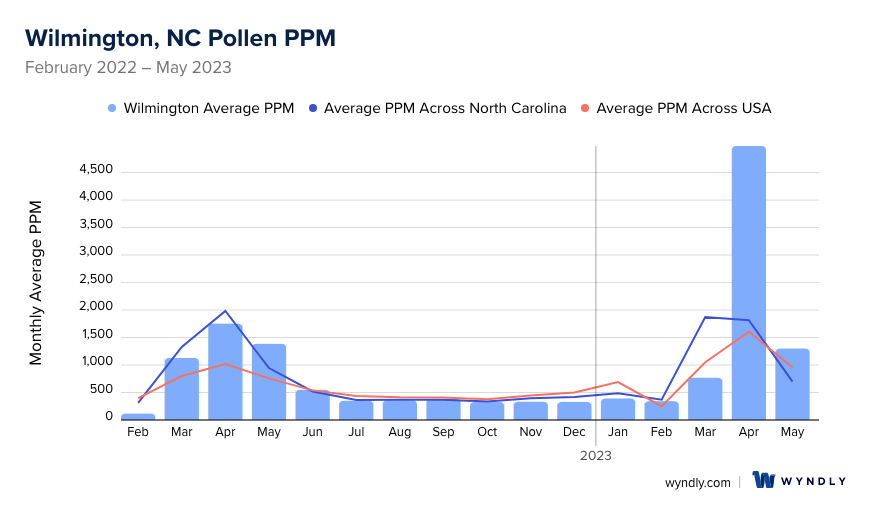
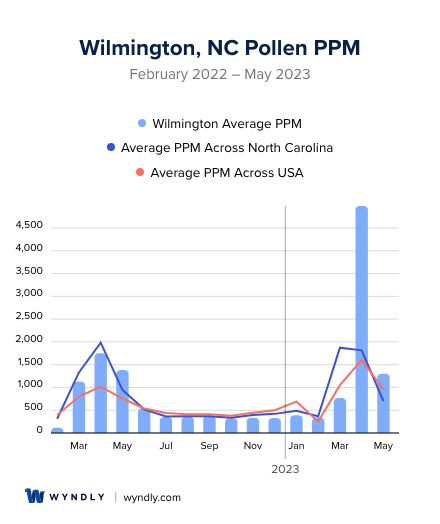
Wilmington, NC Pollen and Allergy Breakdown by Month
Grass
When is grass pollen highest in Wilmington, NC?
April has the highest grass pollen in Wilmington, NC with an average PPM of
When is grass pollen lowest in Wilmington, NC?
December has the lowest grass pollen in Wilmington, NC with an average PPM of
Tree
When is tree pollen highest in Wilmington, NC?
April has the highest tree pollen in Wilmington, NC with an average PPM of
When is tree pollen lowest in Wilmington, NC?
October has the lowest tree pollen in Wilmington, NC with an average PPM of
Weed
When is weed pollen highest in Wilmington, NC?
April has the highest weed pollen in Wilmington, NC with an average PPM of
When is weed pollen lowest in Wilmington, NC?
February has the lowest weed pollen in Wilmington, NC with an average PPM of
Wilmington, NC Pollen Monthly Breakdown by Pollen Type
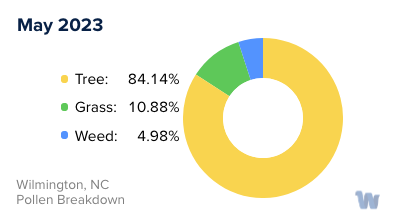
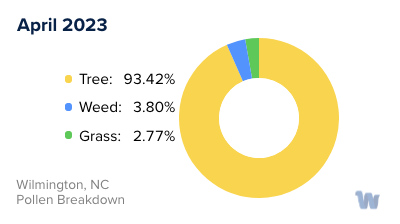
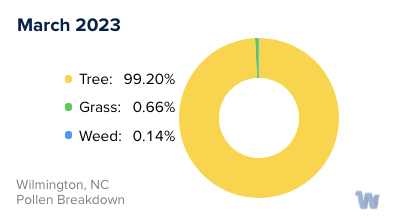
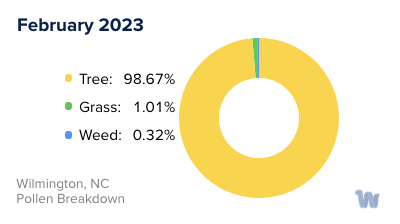
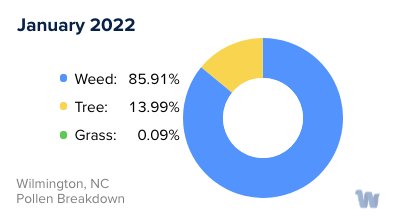
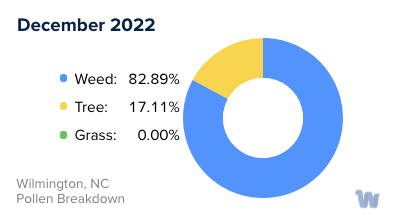
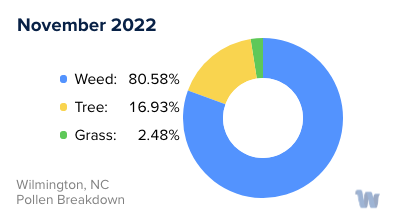
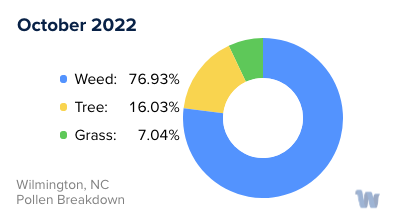
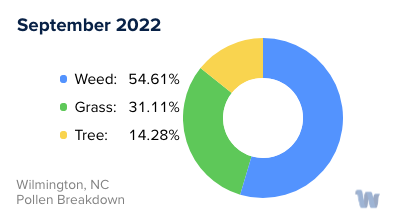
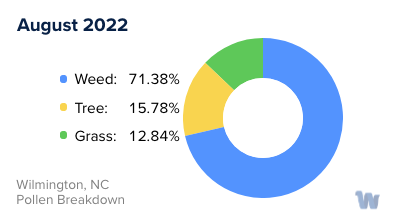
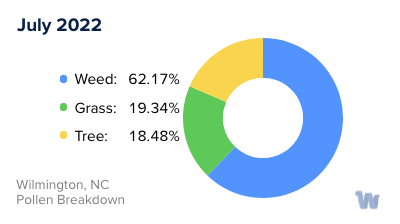
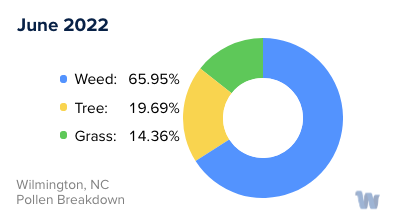
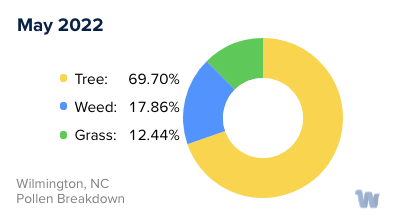
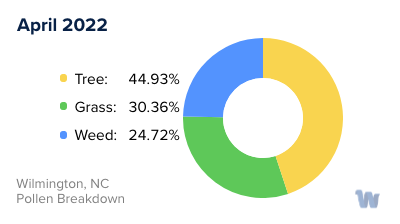
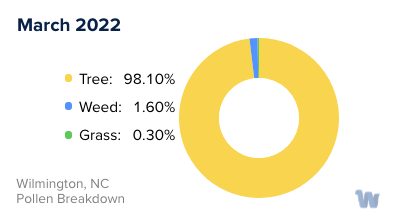
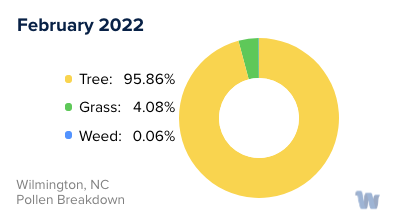
Pollen and Hay Fever in Wilmington, NC
In Wilmington, North Carolina, the splendor of nature is undeniable. However, for those who suffer from pollen allergies, this beauty can come with a price. Pollen allergies, often referred to as hay fever, are common reactions to the tiny particles released by trees, grasses, and weeds. These minuscule grains are essential for plant reproduction, but for many, they can cause sneezing, congestion, and itchy eyes.
In Wilmington, tree pollen is most abundant in the spring. During this season, the air is saturated with pollen from oak, pine, and cedar trees. Many residents find their allergies flare up as the trees burst into bloom.
As spring transitions into summer, grass pollen takes center stage. Bermuda and Bahia grasses are common in Wilmington, and they release pollen that can be troublesome for allergy sufferers. Warm temperatures combined with occasional rain can create the perfect conditions for grasses to thrive and release pollen.
Weeds usually join the pollen party in late summer and continue into the fall. In Wilmington, ragweed is the most notorious culprit. This plant is infamous for producing vast quantities of pollen that can be carried by the wind for miles.
Finally, in the autumn, molds also become a concern. While not pollen, they are airborne spores that can trigger similar allergic reactions. Fallen leaves and damp conditions provide a breeding ground for molds.
In conclusion, the changing seasons in Wilmington, North Carolina bring an array of pollen from trees, grasses, and weeds. Being aware of the types of pollen and their respective seasons can help residents anticipate and understand the challenges they might face due to pollen allergies. This knowledge empowers individuals to take proactive steps for their well-being.

